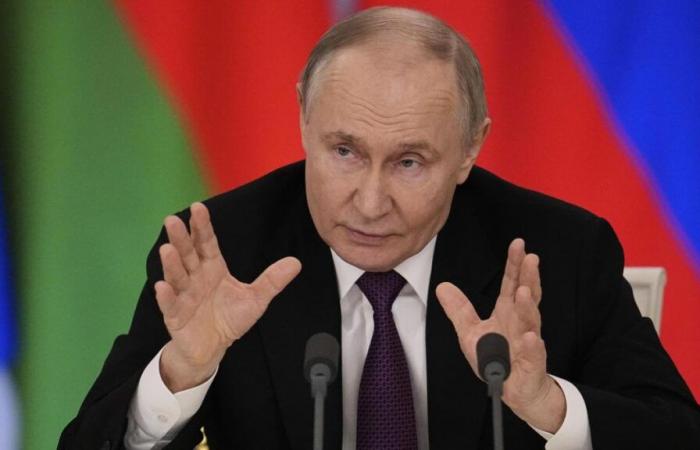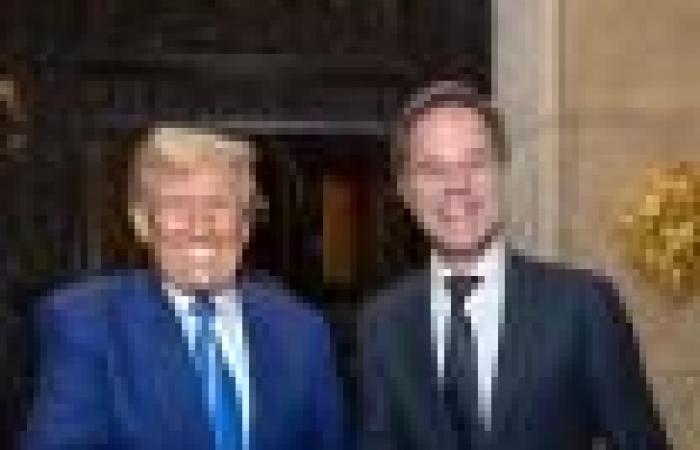From Kalinningrad to Vladivostok, something has changed. A high frequency index prepared by the Goldman Sachs bank points to the fact that, since the end of last year, Russian annualized economic growth has fallen from approximately 5% to zero. The Russian Development Bank finds similar trends in its monthly growth estimation. A high frequency indicator of the Business Business Volume compiled by Sberbank, the largest lender in Russia has also descended. Although more cautious, the government recognizes that something is happening. At the beginning of April, the central Bank said recently “several sectors have registered a lower production due to the fall in demand.”
Russia’s difficulties arrive after three years in which the economy has exceeded almost all forecasts thanks to the combination of fiscal waste, high prices of raw materials and militarization of the economy. After the large -scale invasion of Ukraine in 2022, economists predicted an annual GDP contraction of up to 15%. Actually, GDP fell 1.4% that year and grew 4.1% in 2023 and 4.3% in 2024. Consumer confidence touched historical maximums. When he began to seem that US President Donald Trump could give Vladimir Putin how much he asks to end his war against Ukraine, some estimated that the Russian economy would accelerate even more throughout 2025.
Why the sudden deceleration? Three explanations stand out. The first refers to what the Russian Central Bank euphemistically calls the “structural transformation” of the economy. If he looked at the West before and accepted (within limits) the private company, since 2022 has become a war economy that looks towards the East. Such transformation has required large investments, not only in weapons and ammunition factories, but also in new supply chains that allow greater trade with China and India (as well as a greater national production). In mid -2024, real expenses in fixed capital was 23% higher than that of 2021.
According to the Central Bank, that adjustment has already been completed. military spending follows a similar guideline. Julian Cooper, of the International Institute for Peace Studies of Stockholm (SIPRI), estimates that this year military spending will only grow 3.4% in real terms, which represents a drastic deceleration with respect to the 53% increase last year. A lower expense in “structural transformation” means a slower growth; While that should not worry Putin if he manages to release investment for productive uses. “Finally, it may seem, given macroeconomic realities, we still don’t need that growth,” he said in December.
The second factor is monetary policy. Russian inflation has been over the central bank of 4% year -on -year, and has even exceeded 10% in February and March. One of the causes is unbridled military spending; Another, the shortage of labor caused by the mandatory military service and the emigration of qualified workers. Last year, nominal wages increased by 18%, which forced companies to raise prices. The Central Bank has responded by pressing the nuts. On April 25, he chose to maintain its reference interest rate in a rigorous 21%, the highest level since the early 2000s.
-The important military expense and the lack of labor, as part of it is in the front, trigger inflation above the forecasts
This strict position may finally be doing fruits. The high types have encouraged capitals to invest in the ruble; In turn, a stronger currency lowers imports. The inflation expectations of the Russians for the next 12 months are softening, from a recent maximum located around 14% to around 13%. High frequency data indicate that inflation is decreasing. The other face of the disinflation currency is a slower growth. Instead of spending their money, the Russians are saving it. High types further discourage capital investment.
If this were everything, maybe Putin would be satisfied. For the Russian government, a small gradual slowdown can be a price that is worth paying if that means controlling inflation. The problem is that the deceleration is neither gradual nor small. The reason is that, in recent weeks, a third factor has been imposed on the other two: external conditions have deteriorated. With the climbing of the United States commercial war, world growth forecasts have collapsed, and with them oil prices. Economists are especially concerned with China, the largest Russian oil buyer. The IMF has cut its growth expectations of Chinese GDP in 2025 from 4.6% to 4%.

The fall in oil prices is causing all kinds of problems to Russia. It has affected the stock market, where oil companies represent a quarter of capitalization. The MOEX index, which follows the price of the 50 main traded companies, has dropped a tenth since its recent. As export income decreases, oil prices fall also directly affects the real economy. The government coffers already feel the effects: in March, income from tax on oil and gas fell 17% year -on -year. And on April 22, Reuters reported, citing official documents that the Government expects this year a strong deceleration of oil and gas sales. Trump may show a good disposition to Putin, but with his commercial war he has kicked him in his teeth.
© 2025 The Economist Newspaper Limited. All rights reserved
Translation: Juan Gabriel López Guix







